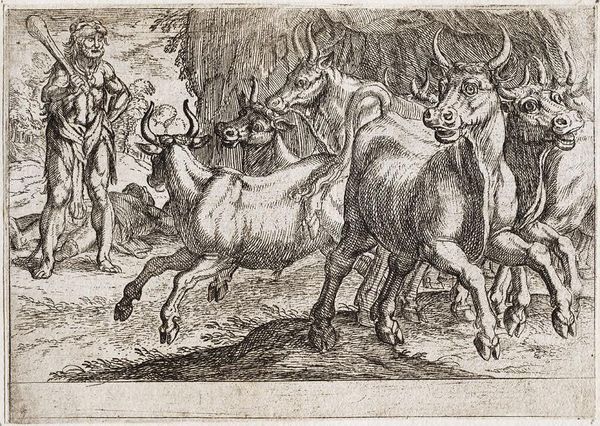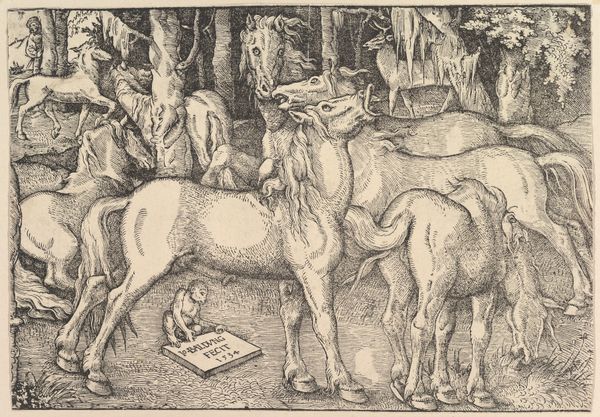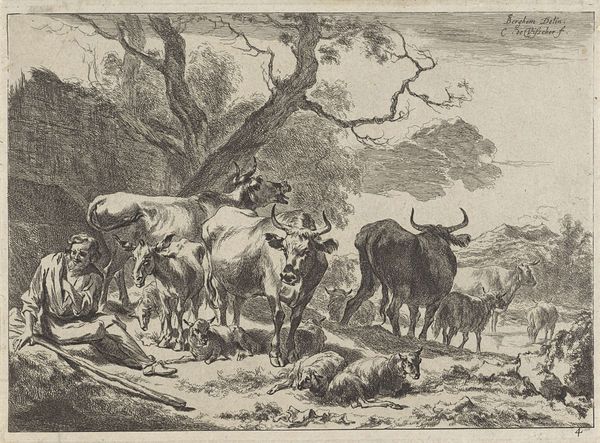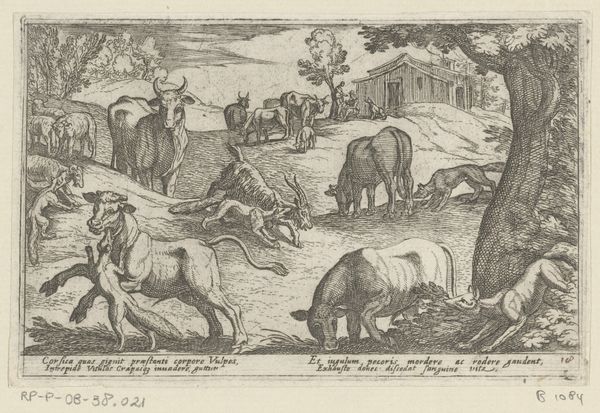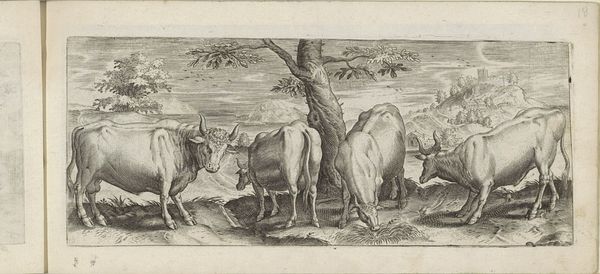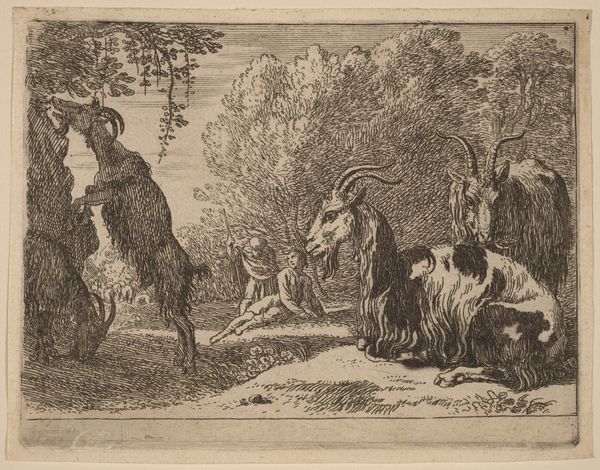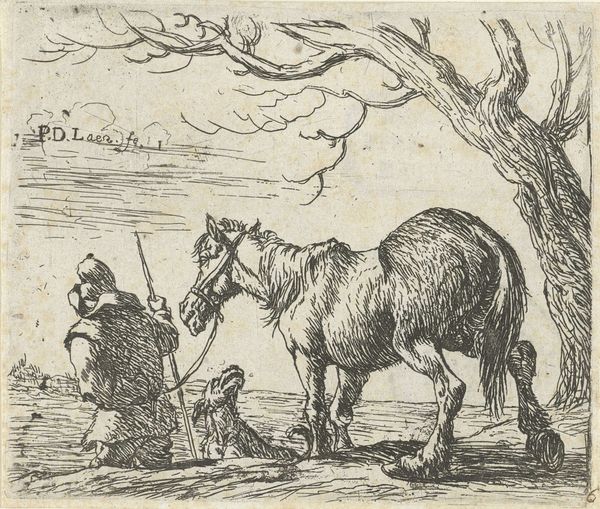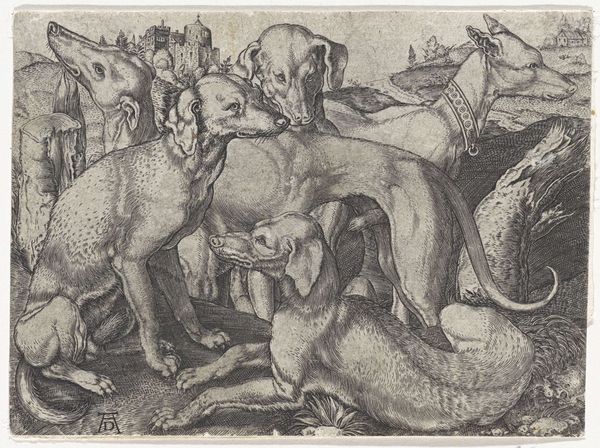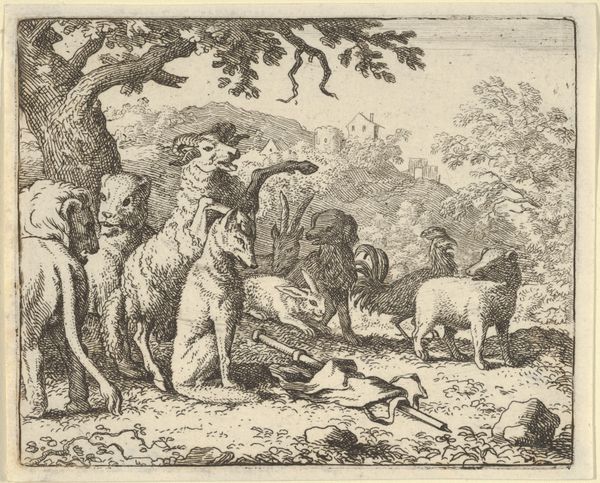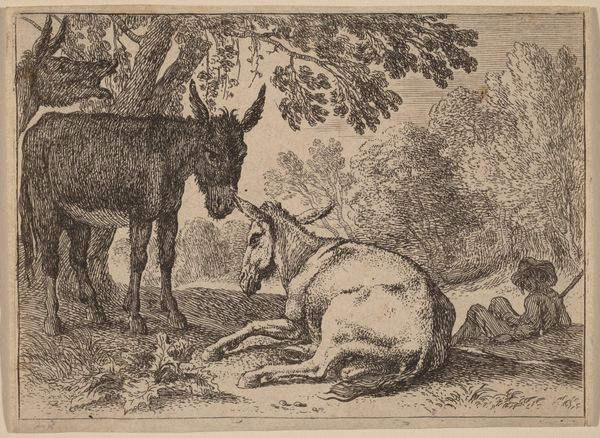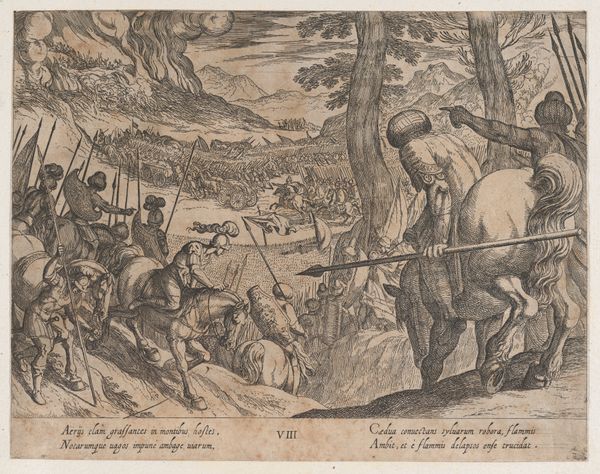
Hercules and the Oxen of Geryones: with a club raised by his right hand, Hercules confronts a group of galloping oxen, from the series 'The Labors of Hercules' 1608
0:00
0:00
drawing, print, etching, engraving
#
drawing
#
baroque
# print
#
etching
#
landscape
#
figuration
#
history-painting
#
engraving
Dimensions: sheet: 5 3/16 x 7 1/16 in. (13.2 x 18 cm) plate: 3 15/16 x 5 9/16 in. (10 x 14.2 cm)
Copyright: Public Domain
Editor: We're looking at "Hercules and the Oxen of Geryones," an etching by Antonio Tempesta, dating back to 1608. There's something about the chaos of the oxen juxtaposed with Hercules' stoic pose that's really striking. What do you make of it? Curator: Oh, I love the dynamic energy Tempesta captures! He’s just having fun with line, isn't he? Imagine the story unfolding - Hercules, muscles rippling, versus a stampede of scared oxen. It feels… almost playful despite the serious subject matter, wouldn't you say? What does that club tell you? Is it really necessary, or is it for show? Editor: I see what you mean about playful. The lines really give the oxen a sense of frantic motion. But, thinking about the history, this is one of Hercules' labors, right? Does the Baroque style add a layer to understanding the task's significance? Curator: Absolutely! Baroque is all about drama and heightened emotion. Look at the landscape, even; it's not a serene backdrop but part of the action, amplifying the tension. He's not just stealing some cows; he's wrestling with fate itself! You get a sense of that grandiose scale? Do you think it communicates effectively to a modern viewer? Editor: I do, especially knowing the story beforehand. Without it, it might just seem like… an angry man and some startled cows! Curator: Precisely! Art unlocks other worlds when the knowledge is layered, eh? Thanks, that clarified how the uninitiated eye might struggle with it. Editor: I didn't think about it that way. I love this art form of a single line which, at one time, could tell such engaging and fascinating narratives!
Comments
No comments
Be the first to comment and join the conversation on the ultimate creative platform.
